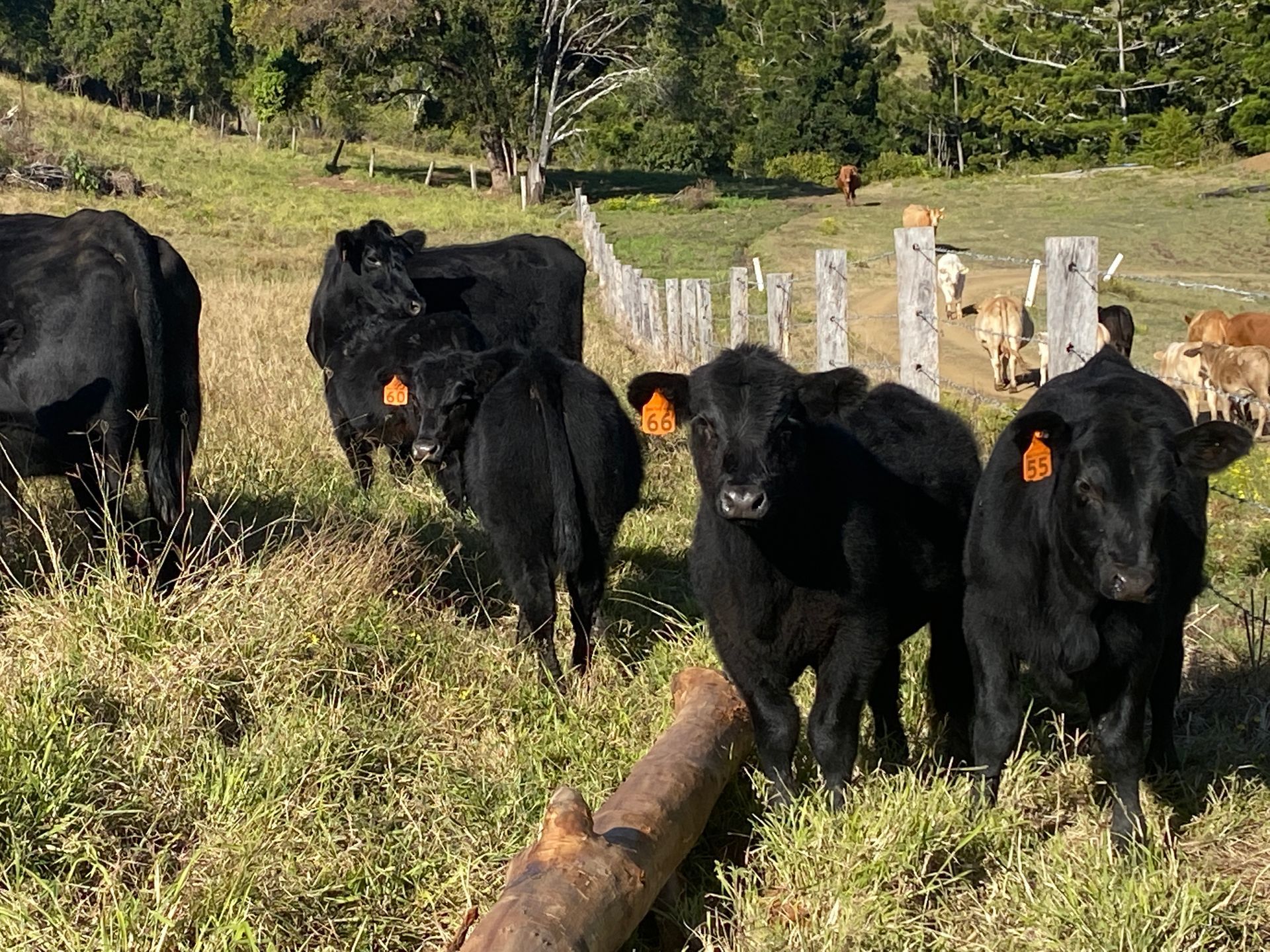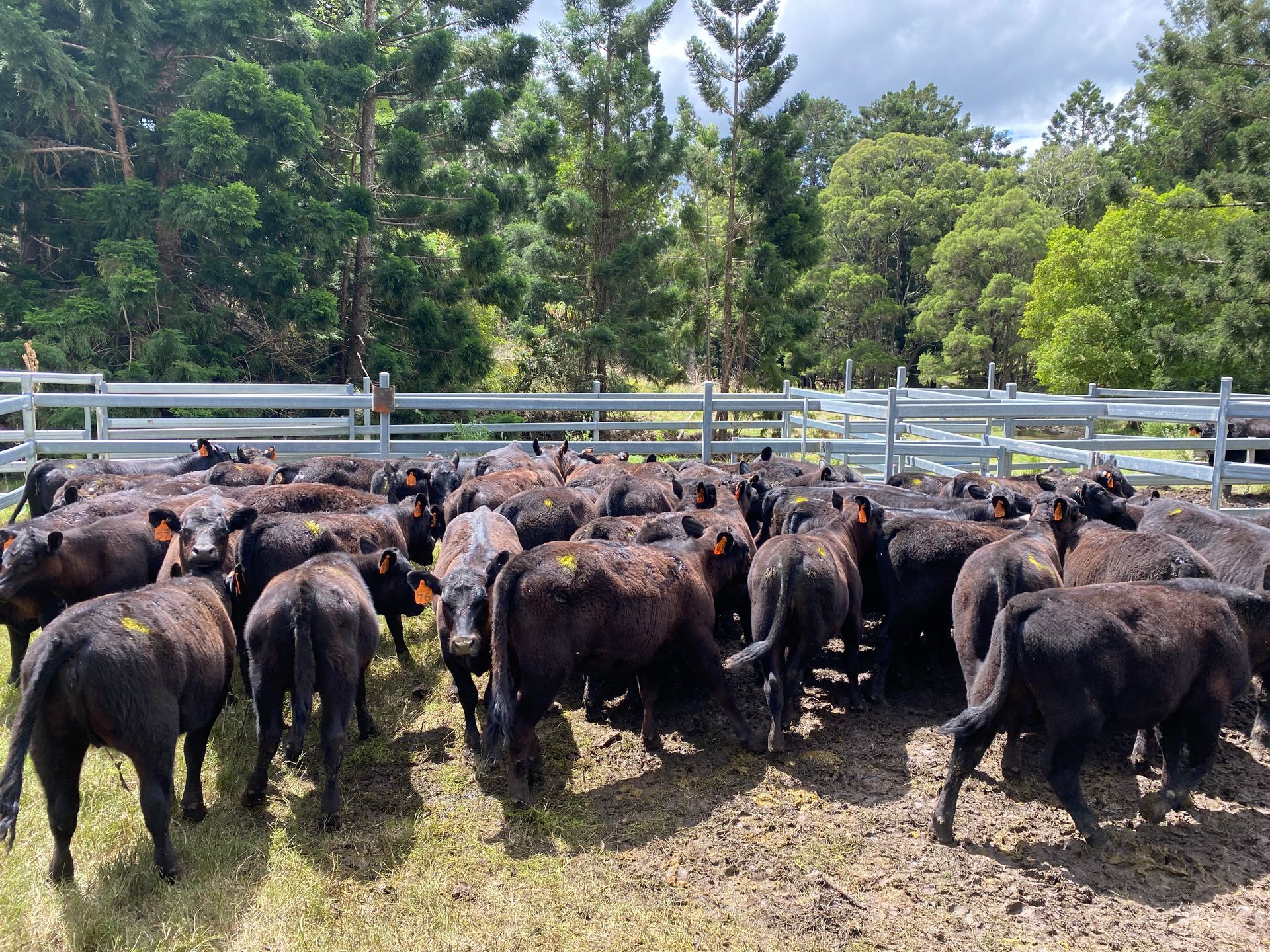
FINDING A GROOVE WITH ANGUS
Other than dairy cattle, Angus were the only other cattle Chad Sawtell grew up with on his family's farm on the Mid North Coast of NSW in Gloucester. This appreciation for the breed led him to purchase Taunton Hills, at Palen Creek, in the Scenic Rim region of Queensland, three years ago, with his wife Megan, where they're raising the children
Madi and Zach while building their pure Angus herd. The undulating country on Taunton Hills hadn't received any rain of note for five years prior to the Sawtells purchasing
the property.
"It started raining the day we settled and has only stopped this summer," Mr Sawtell said. To establish their Angus herd the Sawtells purchased 55 pregnancy-tested-in-calf heifers from the Southbrook area of Toowoomba.
"Southbrook is tick free area and we introduced them to a tick-infested area, however we've just finished our second calving cycle and the cattle couldn't be doing better. "The herd was PTIC due in February, a cycle that the Sawtells have maintained as it sits outside the traditional local weaner drop.
"This tends to lead to a less flooded weaner market when we're selling. We've been selling all of our weaners for the last two years and will do so again this year. "We prefer to sell via Auctions Plus as it opens up the market considerably, however, you need to be able to fill a deck, which is why we've been selling unweaned straight from the cow. "We'd currently consider ourselves as hobby farmers and have therefore taken a simple, less intensive approach to the industry."
The Sawtells have achieved a 100 per cent fertility rate across their first two years of operation. "Year one was with the PTIC heifers we bought and last year was through joinings with our yearling bull purchased from Cochrane Angus.
Mr Sawtell said when reentering the cattle game he thought he was information savvy enough after his 30 years of exposure to the industry growing up. "I was happy to pay top dollar to start the herd I wanted with strong bloodlines. In short, I purchased PTIC cattle from a tick-free area that needed a quick blooding shot and I thought we'd be good to go. How wrong that turned out to be. After unloading and ordering the blood a neighbour introduced themselves and saw what we were about to do, with our first cow already in the crush.

He advised us that a local farmer in the area had done a similar thing and ended up withsignificant losses."We then made countless calls to vets, the Department of Agriculture, and anyone else with realknowledge of introducing heavy in-calf maiden heifers to a tick-infested area and moreimportantly ones who has actually blooded them. With the feedback we received, we decidednot to proceed with our initial plan.
"The Sawtells then embarked on a different journey of monthly Imidox injections until the heifers were calved out and blooded, which involved running close to two cartons per injection for four months. "Once we passed the first test I was adamant my bull was going to be from a ticky area. With a bit of asking around Cochrane Angus stud principal John Cochrane's name came up several times. "John had actually completed his annual sale and didn't have anything available for us at the time, however, a few sleep slater he called me back and we spoke about his business and in particular yearling bulls. He then offered up a young bull and we worked around the timing to make it happen."Mr Sawtell said while he only has the one Cochrane bull he's doubtful he'll be buying from anyone else. "This bull met the brief, he was bred in a ticky area, had great EBVs, and was a young fella capable of chasing 55 head around our steep country. "He walked off the truck and started working straight away on the welcoming crew. He has a beautiful temperament and most importantly he achieved a 100pc success rate on his first drop "Looking ahead the Sawtells are working on tightening up their mating period and adjusting the timing. "This is mainly to keep a tight decker load. We're just starting to get a feel of the land and carrying capacity for the seasons."
Follow Us
575 Stockleigh Road
Jimboomba, QLD 4280
